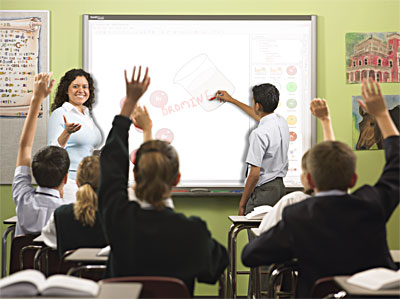Peer editing is making suggestions to works written by people similar to yourself in age. It is a very useful tool that should be taught and used in all classrooms. Providing meaningful feedback to our peers will always be a necessary part of life. Whether this is on a blog post or a research paper, our peers will often ask for opinions on their work. I believe there are many ways to approach this, but the best one is to follow the three steps in peer editing, according to Peer Editing.
First, it is important to compliment the work that is being edited. No matter the quality of the work, someone has worked hard on it and it shouldn't be completely cut down. Next, add some suggestions! Provide any feedback that could be beneficial in bettering the paper, from word choice to staying on topic and being organized. Third, point out what is being corrected. There are ways to do this and not come across as rude- be specific, and stay positive!
As I peer edit blogs that my classmates have written, I will make sure to compliment the good things and critique the things that may need a little tweaking. As I hand out criticism, I will be sure to accept it as well.
Remember, when having works peer reviewed, don't be defensive when someone makes a suggestion to your own work. Take it in stride. People have different perspectives and different ways of reading material. Learn from the minds of others and see where it takes you.
Tuesday, January 27, 2015
Thursday, January 22, 2015
Blog Post 2
What will teaching in the 21st century be like?

1. In Mr. Dancealot (Mr. Dancealot) by Kari Johnson, the central message of the video was that not all things can be taught by just a lecture or a PowerPoint presentation. Some things have to be taught hands on and are further imprinted into the mind by practicing. The author makes his case in the ending of the video. None of the students in dance class had ever had the chance to dance! Because of this, they are not able to complete their final exam. Being a hands on and visual learner, I agree with the author. I find I am best at something when I have the opportunity to do it before.
2. In Teaching in the 21st Century by Kevin Roberts, (Teaching in the 21st Century) Roberts speaks of how technology has completely changed the traditional classroom setting.

1. In Mr. Dancealot (Mr. Dancealot) by Kari Johnson, the central message of the video was that not all things can be taught by just a lecture or a PowerPoint presentation. Some things have to be taught hands on and are further imprinted into the mind by practicing. The author makes his case in the ending of the video. None of the students in dance class had ever had the chance to dance! Because of this, they are not able to complete their final exam. Being a hands on and visual learner, I agree with the author. I find I am best at something when I have the opportunity to do it before.
2. In Teaching in the 21st Century by Kevin Roberts, (Teaching in the 21st Century) Roberts speaks of how technology has completely changed the traditional classroom setting.
- Information is everywhere
- Teachers are not the main source of information anymore- all of the information can be found online
- Should information or skills be taught in the classroom?
- Technology in the classroom has major benefits
Technology has also changed classroom content. Students shouldn't be taught to just memorize facts anymore. They should be taught to analyze, create, and explore. Roberts says that technology is not something that is used for entertainment, it can also be used for engagement. Technology does have its proper place in the classroom, alongside books, pencils, and paper.
I agree with Roberts and his opinion. Many times, teachers just assign students things to read and have a test on what they read. Critical thinking is so important and should be applied in all aspects of the classroom, in all subjects. As a future educator, I believe that my job will be harder than teachers of the past. Students can easily get their hands on information and can complete assignments that look just for facts in a matter of minutes. By making my students think critically and out of the box, I believe that I will better prepare them to be competitive in the real world.
3. In The Networked Student (The Networked Student) by Wendy Drexler, the argument of students really needing teachers in the 21st century is evident. Students are asked to gain so much information on their own, so what does the teacher do? Students look up their own information, write their own papers, and even organize all of the information they have found so that it may benefit another student someday. The video says that students need teachers because even though the teacher may make the student do a lot of work individually, the teacher will teach the student how to take advantage of learning opportunities, how to build networks, offer guidance and communication skills, and teach students how to differentiate between good and bad information. Although these things are correct, I do not believe that teachers should just push their students out into the world on their own. Teachers should be a source of information, and should teach students some of the content that is required to be taught in a particular course. I don't believe teachers should just hand out easy work, but should find a balance between teaching the student content and then personal skills to find subject content on their own.
4. In Harness Your Students' Digital Smarts by Vicki Drexler, (Harness Your Students' Digital Smarts) she is a strong supporter of using technology in the classroom. She sees the important role that technology can play and her classroom thrives off of that. Her students, who all learn in different ways, can succeed in their own way. I loved this and especially her perspective on technology, "You don't have to know everything to teach it". She is thrilled when her students learn something before she does. Her perspective makes me confident that I will successfully be able to use technology in my classroom.
5. In Who's Ahead in the Learning Race? by John Strange, (Who's Ahead in the Learning Race?) the positions of elementary, undergrad, and graduate students is discussed. As an undergraduate college student, I truly believe that elementary school students are leading the way in the learning race. When I was their age (only a little over 10 years ago), my classrooms did not operate much on technology. We did a lot of work by listening to the teacher, using our textbooks, and having pictures and other images displayed to us on a projector and a projector screen. The screen was not touch screen, simply just a screen that one could pull down over the chalkboard. Now, students are given so much technology and are taught to use it at a young age. When they conquer harder tasks at a young age, such as learning to use a Mac book, using Google docs, creating documents and spreadsheets, they will be able to do even more when they get older. These elementary students have been given a head start and have taken full advantage of it. They are leading the race and I am excited for them.
6. In Flipping the Classroom by Lodge McCammom (Flipping the Classroom), the aspect of flipping the classroom is discussed. I had never heard of this before, so it was quite a new concept for me to follow. I do not think that this will be a useful idea for me as a teacher, especially in elementary school. I believe that instruction should be face to face, and that learning should take place in the classroom. Remediation, if needed, should be after school or at home. I believe that this idea of flipping the classroom completely destroys the traditional classroom setting- a setting that I am a fan of. I think that I will still be able to supply creativity and have my students be successful learners and critical thinkers by not flipping my classroom.
Saturday, January 17, 2015
Blog Post 1

EDM 310 is a class that I have heard so much about. I've been warned about the time that it will take to complete the large amount of work by many people. However, I have also heard many stories of how satisfied people feel after leaving this class. Though it is challenging, former students are thankful for the content they were taught and different, effective ways on how to use it in their future classrooms.
I have never taken a course like EDM 310 in high school or in college. I know that, like all classes, there will be extensive projects and different ways to measure success. On the contrary, I know that I will use more technology and different types of technology to complete my work. I am excited about all the new things that I will learn that I can use in my classroom one day!
I believe that the most challenging aspect in this course, for me, will be staying focused and completing all of my work. Sometimes, I get so busy that I forget to complete work for some classes. To address this aspect of the class, I will make sure I remain determined throughout the entire semester, and make sure that my planner stays up to date! I don't have many questions for the course; I am confident that I will be taught everything that I need to know to succeed.
Thursday, January 15, 2015
Practice Blog Post
Outline
Throughout my life, I have spent a lot of time outdoors. Whether it was playing softball (a sport I played for 14 years!), hunting, fishing, boating, or just running around outside with my siblings and cousins, I've always enjoyed nature and getting my hands dirty. Even though I'm older and busier now with school and work, I make sure to find time for a run through a trail or work outside with my dad.
- Mississippi native
- Enthusiasm for teaching and learning
- Love the outdoors and exercise
- Family oriented
My name is Sarah Glenn, and I am from Franklin Creek, Mississippi. It is a very small, rural community on the outskirts of the city of Moss Point. I graduated from Moss Point High School in 2013. Growing up, the University of South Alabama was never a college prospect for me. However, the summer before my senior year, I took a campus tour and fell in love with the buildings, scenery, and people that I met. Thus, I ended up in Mobile, Alabama and I am thankful that this is where I was meant to be. Not only am I at an awesome university, I'm not far from my family, which really makes me happy. It is so important to me that I spend time with my family members and maintain healthy relationships with each of them.
I am majoring in elementary education. I have a passion for not only children and teaching, but learning as well. I truly believe that knowledge is power, and with a solid education, a person can do anything he or she puts his mind to.
Throughout my life, I have spent a lot of time outdoors. Whether it was playing softball (a sport I played for 14 years!), hunting, fishing, boating, or just running around outside with my siblings and cousins, I've always enjoyed nature and getting my hands dirty. Even though I'm older and busier now with school and work, I make sure to find time for a run through a trail or work outside with my dad.
Subscribe to:
Posts (Atom)